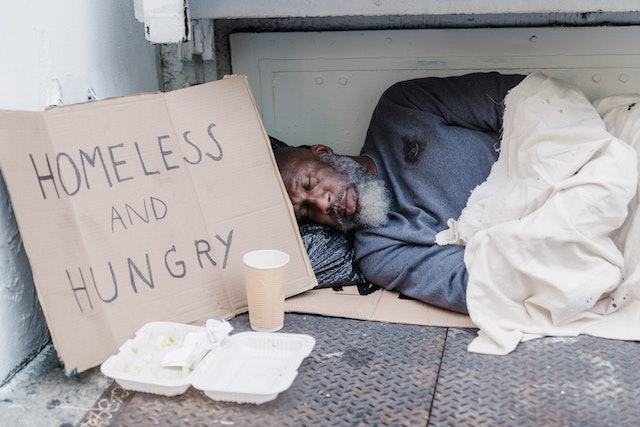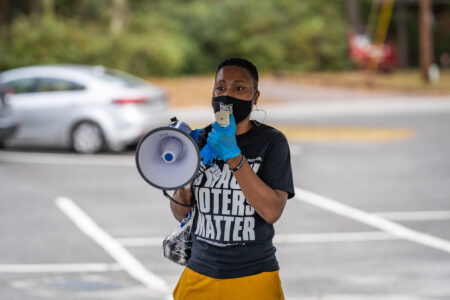“Losing my job was the beginning of a deep spiral. I never thought that I’d be one paycheck away from losing everything but that’s exactly what happened.”
These words by a middle-aged man living in Phoenix tell the stark reality of life as a person who is experiencing a lack of access to safe and secure housing. The epidemic of increasingly unhoused persons in America is a complex and pervasive issue that affects millions of individuals across the country. While some might associate lack of housing with addiction, mental illness, or economic hardships, the pathways to becoming unhoused are far more multifaceted.
There are many unexpected ways that individuals find themselves among the unhoused. Here are some ways that may catch you by surprise.
Medical Bankruptcy
One of the least expected pathways to being unhoused is medical bankruptcy. The United States lacks universal healthcare, forcing individuals to choose between their health and their home. A sudden illness or injury, coupled with exorbitant medical bills, can easily push someone into homelessness.
“When my wife went into early labor, we had no idea that the ambulance cost was separate from the hospital. Before we knew it, we were in for $16,000 in medical bills. Who has that kind of money just laying around?” says Terrence, a 28-year-old Amazon driver living in Detroit.

Domestic Violence
Victims of domestic violence often flee their homes to escape abuse, only to find themselves without a safe place to stay. The trauma and fear of returning home can force them into a life of uncertainty on the streets or in shelters. With shelter populations increasing across the country, placement in a secure facility is not always likely. Victims may find themselves unhoused during one of the most fragile and precarious times in their lives.
Proposed cuts to the Crime Victims Fund would negatively impact millions of people who need access to these lifesaving services. Tell your Member of Congress to the fund the Victims of Crime Act in the 2024 budget! Let them know: https://t.co/4kLth3lJwC pic.twitter.com/9SdOif7Mwc
— National Domestic Violence Hotline (@ndvh) September 12, 2023
Aging Out of Foster Care
Youth aging out of the foster care system face a daunting transition. With limited life skills, support systems, or resources, many end up homeless. The abrupt shift from a structured environment to independent living can be overwhelming, leading to homelessness. “No one prepared me. I turned 18 and it was just like, ‘you’re on your own’. I had no idea what I was supposed to do…there was no resources or nothing for me,” shares Genesis, a 32-year-old woman who was unhoused for five years in her late teen years after aging out of the foster care system.
Congrats @fosterforward on a successful fundraiser tonight to provide affordable housing for young adults aging out of foster care. Very cool that @gabeamo stopped by. pic.twitter.com/DqTQXGK2BJ
— Kathleen Hart (@kathchats) September 9, 2023
Natural Disasters
Natural disasters like hurricanes, floods, and wildfires can destroy homes and displace communities. When insurance and government aid fall short, some survivors are left with no choice but to live in makeshift shelters or on the streets. Climate change has increased the frequency and severity of such natural events, making it more difficult to handle the influx of individuals and families into unhoused communities.
HUD announced new funding for people experiencing homelessness in Hawaii following the devastating wildfires even as advocates are calling for more reforms to the disaster relief program:https://t.co/Ln9LK0dLj1
— Invisible People ➤ Imagine Everyone With a Home (@invisiblepeople) September 7, 2023
Job Loss and Housing Costs
A sudden job loss, coupled with soaring housing costs, can push individuals and families over the brink. Even those who were once financially stable may find themselves unable to afford their homes, ultimately facing the absence of housing.

Criminal Justice System
Involvement with the criminal justice system can disrupt lives in unexpected ways. Upon release, former inmates often struggle to secure housing and employment due to the stigma associated with their criminal record, leading to homelessness. Many apartment complexes and rental companies have strict policies prohibiting individuals with criminal convictions from renting.
This creates an added burden because the rate of recidivism due to being unhoused is quite high.

Family Estrangement
Family conflicts can escalate to the point where individuals are ostracized or cut off from their support networks. Without familial assistance, people can quickly find themselves without a place to live.
Bipolar disorder, addiction, rising housing costs, family estrangement from his abuse. Forest destruction for timber mills, city over expansion, dying industry, job loss. Little social aid.
— Camille U. Adams, ABD 🇹🇹 (@Camille_U_Adams) May 4, 2023
Homeless in the City Where He Was Once Mayor https://t.co/3QLVxUinTS
Educational Debt
The burden of student loan debt can be overwhelming. Graduates saddled with substantial loans may find themselves unable to make ends meet, resorting to couch surfing or being unhoused. According to Forbes, the student loan debt in America is $1.7 trillion, noting that half of the students who leave colleges and universities are saddled with debt.
Lack of access to safe and adequate housing is a complex issue with myriad root causes.
While addiction, mental illness, and economic hardship are well-known contributors, the unexpected pathways to becoming unhoused are equally concerning. It is crucial to address these hidden causes and provide support and resources to prevent individuals from falling through the cracks. By understanding and addressing these lesser-known triggers, we can work towards a society where everyone has a safe and stable place to call home.

If you are homeless or at risk of becoming homeless, please contact your local 2-1-1 hotline to get help in your community.
Words by Kaba Abdul-Fattaah.








